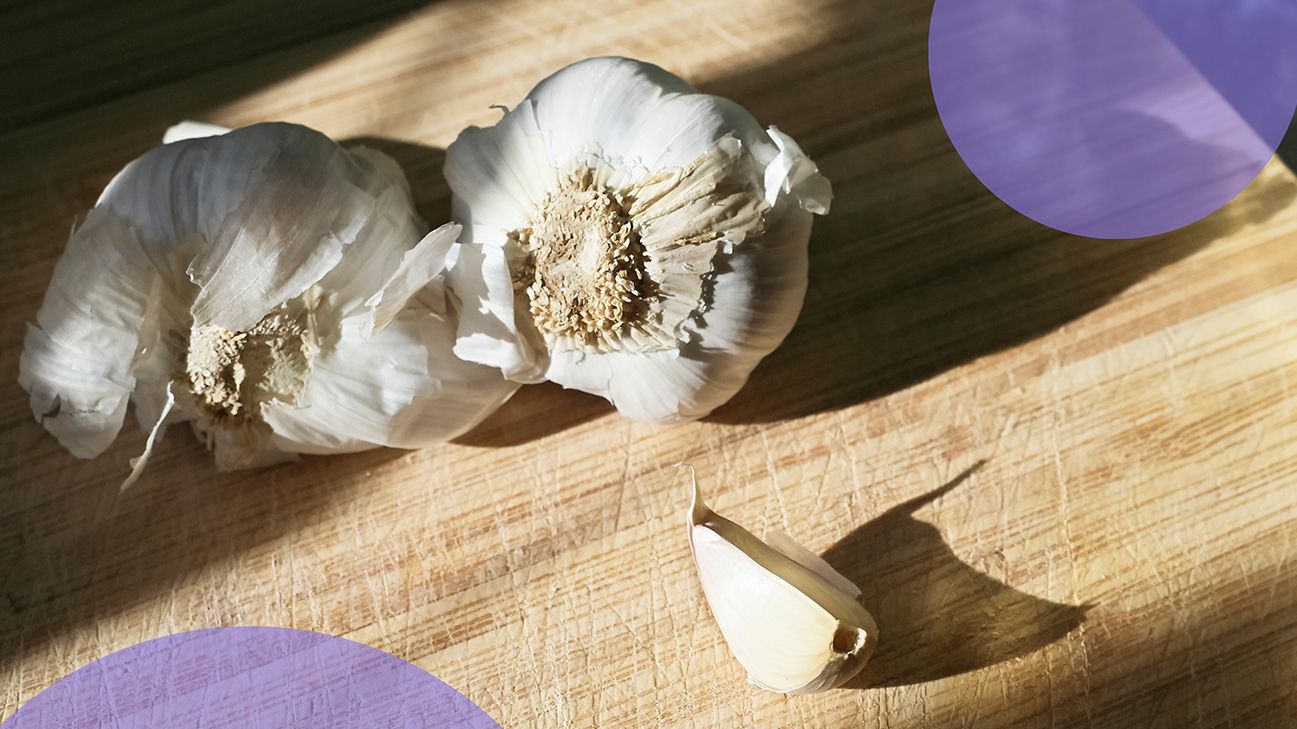The 7 Biggest Healing Mistakes I See as an IBD Nutritionist
June 29, 2023
Content created for the Bezzy community and sponsored by our partners. Learn More

Photography by Kelly Mitchell/Getty Images
Some people don’t stay on elimination diets long enough; others stay on them too long. Plus, there’s a lot to learn about healing foods, supplements, and more.
As a nutritionist living with Crohn’s disease, I understand just how confusing nutrition and healing can be with inflammatory bowel disease (IBD).
Put a few searches out online and you’ll find a wide variety of dietary approaches and advice for people with Crohn’s or ulcerative colitis. To make it more confusing, IBD itself is highly individual. Various stressors affect us all differently, and our symptoms present uniquely. Each person with IBD is like a snowflake!
Over the years, I’ve seen some common dietary missteps — both my own and those of my clients. If you feel like you’re hitting walls in your IBD healing, perhaps you’re making one of these common mistakes.


1. Not tracking food and symptoms
One of the best tools you can use is a food and symptom tracker, often referred to as a food diary or food journal.
Tracking foods and symptoms isn’t about hyperfixating on cultivating a “perfect” diet or calorie counting. It’s meant to help you draw connections between your diet and symptoms so you can determine what your triggers are and make the best decisions going forward.
I don’t know about you, but I have a hard time recalling what I ate just yesterday, so I won’t rely on my memory alone.
You can track your food and symptoms in a classic pen-and-paper format or use the Notes app on your phone. You can even find apps to do this if that’s more your speed.
No matter which tool you use, to gather the most insights, track the following:
- what you ate and about how much
- what time you ate each food
- any physical symptoms, and at what time
- any mental or emotional symptoms, and at what time
- what supplements or medications you took, and at what time
See if you can draw any consistent connections between specific foods and symptoms. Be sure to make notes of any conclusions you draw, as these are also easy to forget!
2. Not giving diet changes enough time to work
Because of the individual nature of IBD, there is a lot of self-experimentation when it comes to figuring out what foods are helpful or hurtful. Sometimes we can feel a difference right away, but often it can take time.
It can feel really frustrating when you’ve eliminated a suspected trigger food and can’t feel or see a difference right away. I get it — you might want to throw in the towel!
Before you conclude something isn’t working and go back to square one, make sure you have given the changes a real chance. While there’s no standard length of time for implementing an elimination diet, most clinical studies give them anywhere from 2–12 weeks to work.
In my practice, I usually suggest removing a food for 30–90 days before writing it off.
3. Staying on an elimination diet for too long
To (almost) contradict mistake #2, another common mistake is staying restrictive in your diet for too long before introducing specific foods back in.
Let me explain: Going through an elimination diet, or intentionally removing foods from your diet for a period of time to allow healing, is meant to be a therapeutic tool, not a forever thing! When you’ve found a way of eating that relieves the pain you once felt, it feels so freeing. So it’s understandable why you might want to stay on your elimination diet long-term.
Ultimately, though, it will be best for your nutrient intake and overall enjoyment in your life if you can bring eliminated foods back into your diet.
Start reintroducing them slowly, one at a time, with the food you are most comfortable with. For example, if you have been maintaining a low fiber diet, which is often recommended while healing your gut, try a small amount of a well-cooked veggie. Wait a few days to ensure you don’t have a bad reaction to it, and then you can add it to your new list of safe foods.
4. Not hydrating properly
Electrolytes such as sodium, chloride, and calcium are needed for countless processes in the body that keep us alive, and electrolyte imbalances can result in many symptoms, such as:
- fatigue
- headaches
- muscle twitches or cramps
- nausea
- and more
Research in 2013 has shown that people with IBD often have lower levels of electrolytes. This occurs due to inflammation in the intestines, which reduces the absorption of these critical salts. Some electrolytes are also lost through bodily fluids.
When electrolyte levels are low, it’s difficult to achieve adequate hydration. And dehydration can worsen IBD symptoms. Therefore, it’s important to be aware of your electrolyte intake.
To support balanced electrolyte levels, you can add an electrolyte supplement to your water, tea, or smoothies. In addition, eating a whole-foods diet is helpful because you’ll naturally take in electrolytes through your food. Fruits and veggies are rich in electrolytes and also contain water, and other foods like meats, nuts, and beans are also good sources of electrolytes.
Remember to be especially aware of your electrolyte levels if your IBD symptoms include vomiting or diarrhea, as your need to replenish electrolytes increases during such times.
5. Not incorporating gut-healing foods
Adding in certain foods that promote gut health can have great effects on our digestive and overall health.
Some of the best healing foods are:
- Bone stock/broth: This is an ancient food made by simply simmering animal bones to make a stock. Recent research on mice with ulcerative colitis suggests that the abundance of amino acids in bone broth — and their anti-inflammatory properties — are largely responsible for the soup’s healing effects on the digestive tract.
- Probiotic-rich foods: Probiotics are found in fermented foods like yogurt, kefir, sauerkraut, and kimchi. Emerging research suggests that probiotics can reduce inflammation, improve the gut microbiome, and help maintain remission in UC.
- Foods rich in prebiotics: These foods feed and encourage the growth of probiotic microbes. Research in 2021 suggests these may also help improve gut health. Some great sources of prebiotics include plants and grains like chia seeds, onions, garlic, oats, and barley.
Here are some ways to use these foods in your diet:
- Use bone stock as the base for a chicken and veggie soup.
- Add a forkful or two of sauerkraut to one of your meals each day.
- Drink kefir with breakfast.
From dairy products to veggies to soups, there are many ways to bring gut-healing foods into regular rotation.
6. Not addressing the effects of stress on digestive health
As a nutritionist, I know that dietary choices hold a lot of weight when it comes to digestive health, but even the best diet can’t compensate for poor sleep and unmanaged stress.
Research has linked stress to some direct effects on the gut, such as:
- An increase in gut permeability: Also known as leaky gut syndrome, this is where the gut lining becomes more permeable than it should be, allowing undigested food and pathogens to enter the bloodstream.
- Peristalsis: The contraction and relaxation of the muscles in the intestine, which moves along food to be digested and stool to be passed out of the body.
- Dysbiosis: An imbalance in the different types of gut bacteria in the microbiome.
These stress-induced changes in the gut can result in new or worsening digestive symptoms.
One stress-managing habit that is free and easy is breathwork. Research has shown that manipulating your breath can activate the parasympathetic nervous system, which is the relaxation counterpart to the fight-or-flight mode, and ultimately reduce stress. Our breath is like a built-in stress management tool!
Try doing a few rounds of breathwork before eating or any time you are feeling stressed or anxious. One of my favorite breathwork exercises is box breathing.
To perform box breathing, follow these steps:
- Inhale deeply through your nose for a count of your choosing (4 seconds is a great place to start).
- Hold your breath for the same count (in this example, 4 seconds).
- Exhale through your mouth for 4 seconds.
- Hold your breath for 4 seconds before taking your next inhalation.
And that is one round of box breathing! You can continue this until you feel the positive, relaxing effects.
7. Using supplements without intention
Dietary supplements can be helpful tools when you use them with purpose.
Because impaired absorption is a key challenge for people with IBD, supplements can often help with micro- and macronutrient intake. However, reading the often-conflicting advice online about which supplements to take can be confusing.
As a nutritionist, I recommend a few categories of supplements most often, but when it comes to specifics, it really depends on the individual.
Generally, the types of supplements that can be most helpful are those that are:
- healing to the gut, typically with plant and herbal formulations such as the amino acid L-glutamine or the plant aloe vera
- assisting in digestion, such as a digestive enzyme that helps to break down your food
- supporting a nutrient deficiency, such as a multivitamin or even a specific vitamin or mineral
Just as with food, it’s best to give supplements time to work and then see if you notice a positive difference in symptoms or, in the case of nutrient deficiencies, in your blood work.
To ensure you are using effective, high quality supplements that are right for you, it’s best to work with a practitioner who can advise you on what is best to take for your body.
The takeaway
We are all doing our best to find the right recipe for achieving a lifestyle that helps us feel our best while living with IBD. The right things for you may be different than for me, but avoiding common mistakes may help you make the most effective diet choices.
Have you learned some healing lessons on your own? Share them in our Bezzy IBD community!
Medically reviewed on June 29, 2023
10 Sources


Like the story? React, bookmark, or share below:
Have thoughts or suggestions about this article? Email us at article-feedback@bezzy.com.
About the author